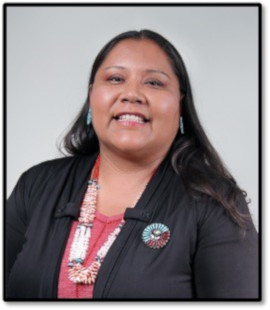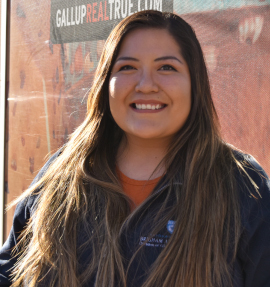Q & A: How COPE is Raising Clean Water Awareness, Access on Navajo Nation
Posted on Mar 20, 2020
Across the 27,000 square miles of Navajo Nation in the southwestern U.S., one of the biggest health issues is something many people elsewhere in the country take for granted: access to clean, potable water.
The Navajo Nation’s Department of Water Resources has estimated that 30 percent of nation residents lack access to running water, and must haul water to their homes after driving miles to a pickup location, which is often a community well. The scarcity can be heightened during extended dry weather, and many of the Nation’s 300,000 residents need water not only for themselves and their families, but also for gardens, livestock, and household uses.

And in the arid southwest, surface water is also a dwindling resource. The amount of surface water in Navajo Nation—which includes parts of New Mexico, Arizona and Utah—dropped by about 98 percent over the last century, as temperatures warmed and precipitation declined.
Water scarcity has been compounded by environmental issues, including pollution from more than 500 abandoned uranium mines in the region.
All of those concerns are why Community Outreach and Patient Empowerment, or COPE, a sister organization of Partners In Health, is working to expand access, awareness, and education about clean water and its effect on health across all of the Navajo Nation communities that COPE supports.

In honor of World Water Day, which is March 22, two COPE staff members talked about social factors that affect water use, how better marketing and fewer sugary drinks can improve health, and a new program called Water is K'é, which is reminding residents to choose water when making decisions about which beverage to buy for themselves and their families.
The name of the program translates in Diné bizaad, or Navajo language, as “Water is Kinship.” And to these two COPE staff—Research & MEQ Manager Carmen George, and MEQ Coordinator Shine Salt—kinship is exactly what promoting clean water and healthy communities is all about.
What are some of the factors that affect whether people choose water as their beverage of choice? Have you and your team identified different factors or influences for elders, compared with young people?
-
Store Marketing: A COPE partner created a video, in which they went to a local grocery store and found 19 soda displays, compared to very few for water.
-
Trust: We surveyed 109 community members, and 19 percent said the reason they do not drink tap water is because it is not safe.
-
Low Awareness: Caregivers and parents often are uninformed about how much sugar is in their beverages, and how it can harm their health.
-
Changing times: Elders have mentioned that in the past, soda was used as a treat and shared among all relatives, compared to now, where it’s easily accessible.
We understand that COPE developed its Water is K'é program to increase water consumption. Can you describe the program's goals, and what it entails?
COPE has developed a culturally based and community-informed program to promote healthy beverage choices in Navajo Nation. This program, which we call “Water is K'é,” has a multi-faceted approach:
-
Promoting a community-wide culture of health through campaign materials, including local champion posters, store marketing materials, and dissemination of fun challenges and activities that support healthy lifestyles.
-
Sharing traditional knowledge and hands-on, healthy practices, through a recently produced video of elder teachings on water, and demonstrations of healthy beverage choices.
-
Increasing access to healthy beverages by distributing healthy beverage kits and water filters to community schools, after-school programs, dormitories, stores, clinics, and more.
Can you describe how COPE worked with community partners to develop this program?
COPE did a community assessment around people’s thoughts and attitudes on water. This is how we tailored the program to meet the community’s needs. Initial funding included a capacity-building grant with eight grantees; this is how we learned together, by understanding approaches to the community. We shared the types of strategies we were implementing with Native communities and best practices for a successful initiative.
This is how we learned together, by understanding approaches to the community.
What progress or impacts have you seen from the Water is K’é program?
The initiative is gaining much more attention now than when we initially started – people are doing a 30-day water challenge on their own, and COPE partners are creating small environmental changes by only serving unsweetened tea and water at their family events. Past participants of the 30-day water challenge have mentioned that since making water their first choice, they have lost weight and are making healthier beverage choices for their family.

